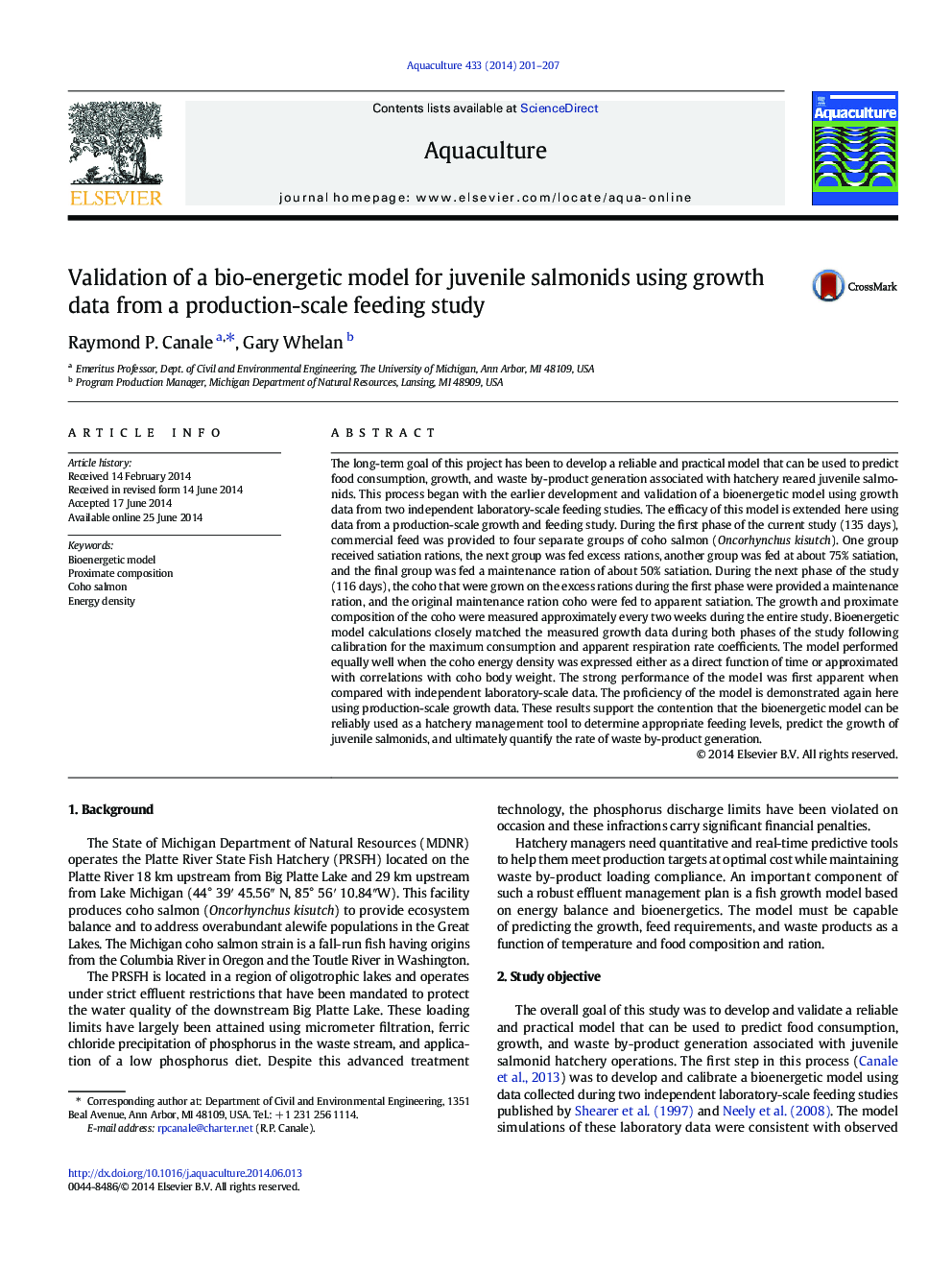| کد مقاله | کد نشریه | سال انتشار | مقاله انگلیسی | نسخه تمام متن |
|---|---|---|---|---|
| 2421909 | 1552854 | 2014 | 7 صفحه PDF | دانلود رایگان |
• Feeding study validated bioenergetic model for juvenile coho salmon.
• Four different rations were tested ranging from maintenance levels to excess.
• Fish energy density is a function of ration.
• Model apparent respiration rate is attenuated for low ration conditions.
The long-term goal of this project has been to develop a reliable and practical model that can be used to predict food consumption, growth, and waste by-product generation associated with hatchery reared juvenile salmonids. This process began with the earlier development and validation of a bioenergetic model using growth data from two independent laboratory-scale feeding studies. The efficacy of this model is extended here using data from a production-scale growth and feeding study. During the first phase of the current study (135 days), commercial feed was provided to four separate groups of coho salmon (Oncorhynchus kisutch). One group received satiation rations, the next group was fed excess rations, another group was fed at about 75% satiation, and the final group was fed a maintenance ration of about 50% satiation. During the next phase of the study (116 days), the coho that were grown on the excess rations during the first phase were provided a maintenance ration, and the original maintenance ration coho were fed to apparent satiation. The growth and proximate composition of the coho were measured approximately every two weeks during the entire study. Bioenergetic model calculations closely matched the measured growth data during both phases of the study following calibration for the maximum consumption and apparent respiration rate coefficients. The model performed equally well when the coho energy density was expressed either as a direct function of time or approximated with correlations with coho body weight. The strong performance of the model was first apparent when compared with independent laboratory-scale data. The proficiency of the model is demonstrated again here using production-scale growth data. These results support the contention that the bioenergetic model can be reliably used as a hatchery management tool to determine appropriate feeding levels, predict the growth of juvenile salmonids, and ultimately quantify the rate of waste by-product generation.
Journal: Aquaculture - Volume 433, 20 September 2014, Pages 201–207
